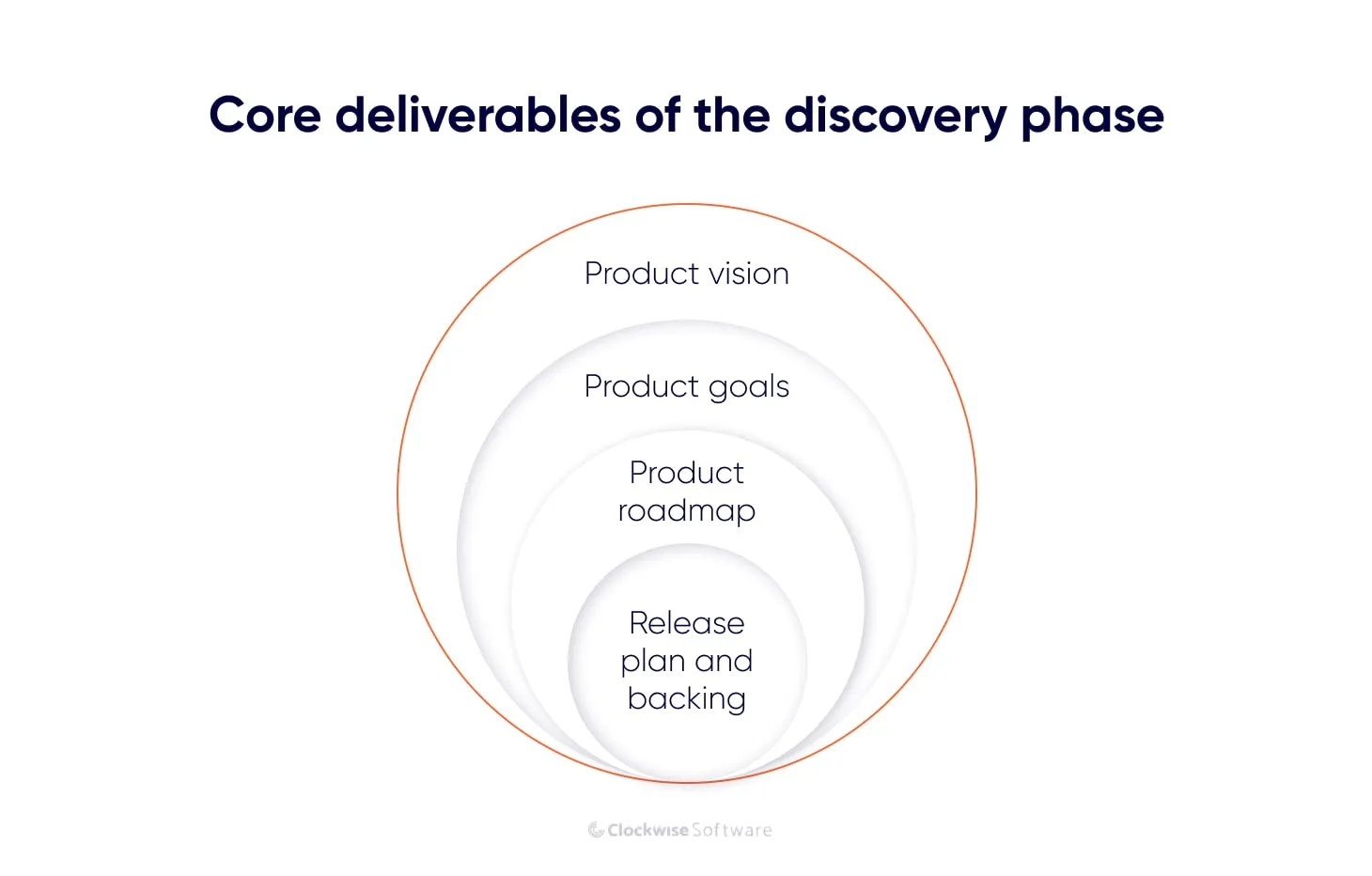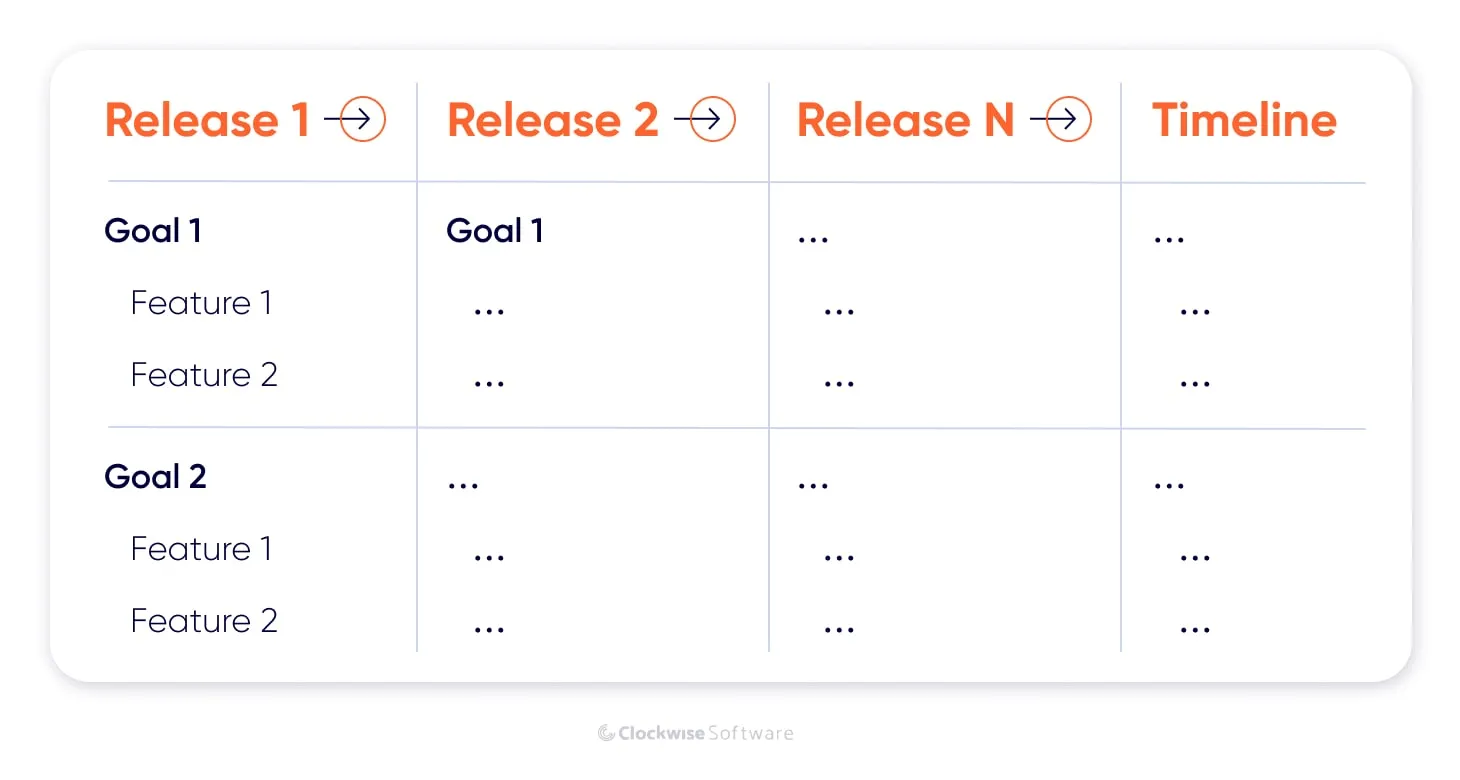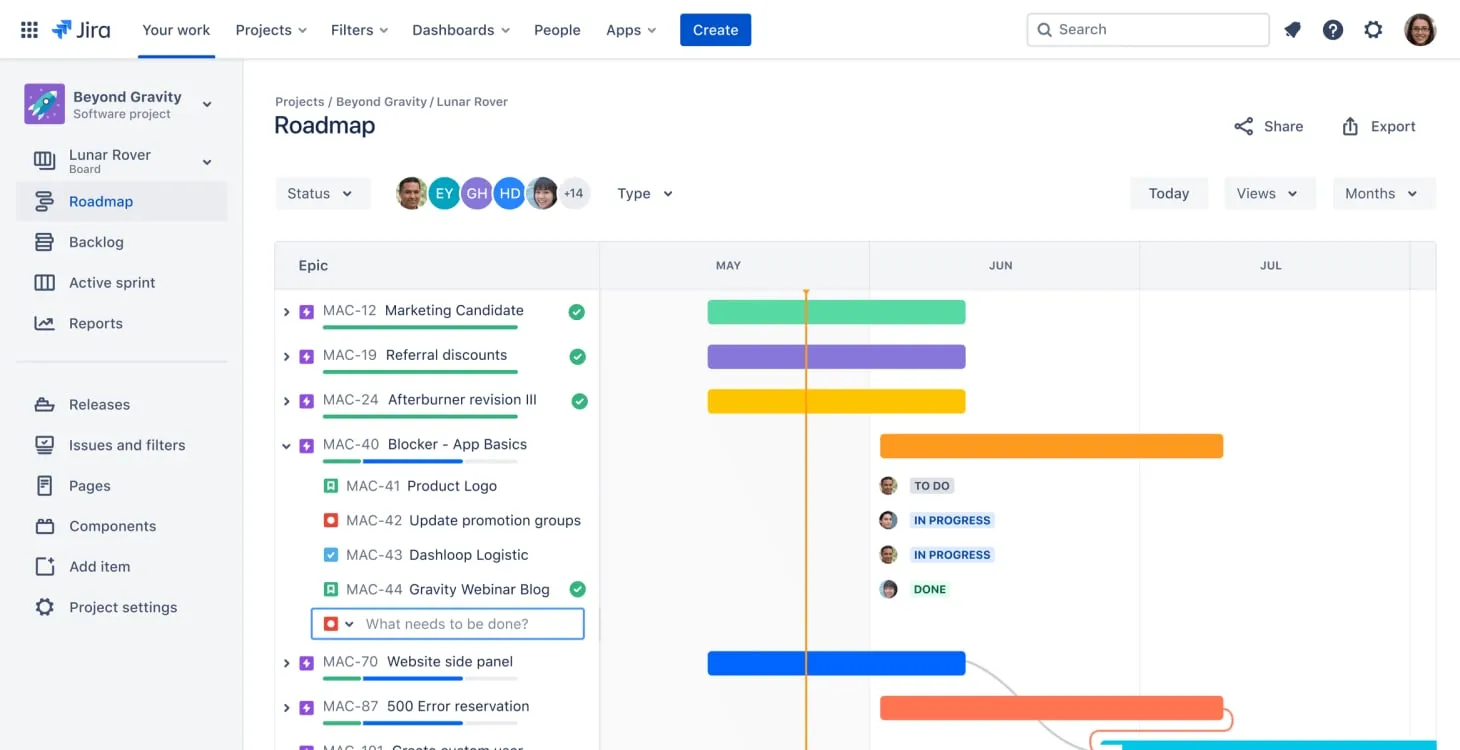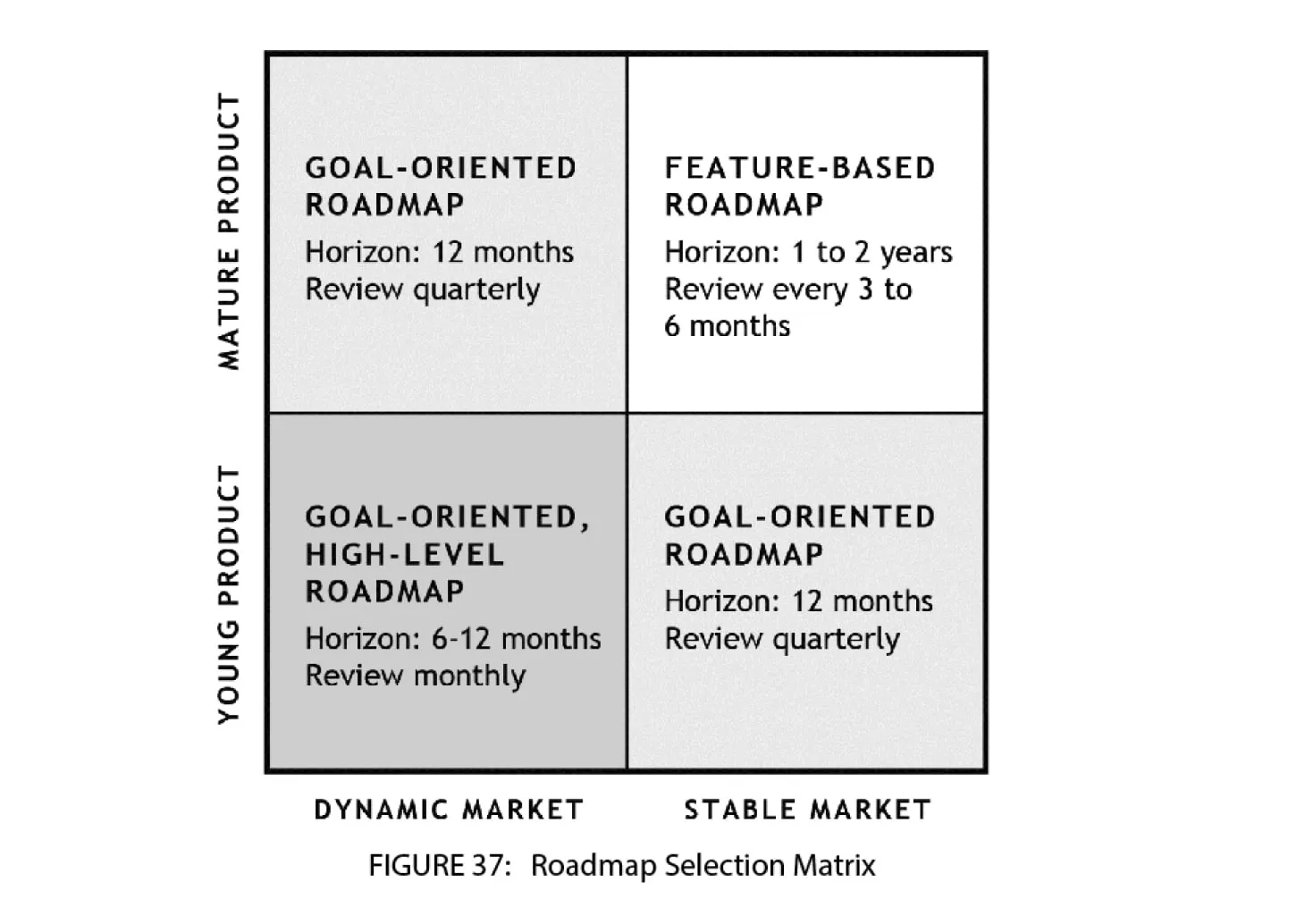What we do
Services
Experts in
When you’re planning a perfect family vacation, you create a detailed plan, check the shortest or most scenic routes to your destination, choose a cute hotel to stay the night, share your plans with your family members, and calculate the approximate expenses.
When you’re planning to release a viable software project, you probably want to do more or less the same thing. That’s what a product roadmap is all about.
But how can you build a roadmap when your goal is much bigger than simply going on vacation?
As a software product development company, we recommend approaching your product roadmap with the same level of care and attention to detail as you would when planning a big family trip. After reading this article, you’ll know how to build a product roadmap as easily as you might create an itinerary for a trip to Florida. Prepare to find out about the role of a product roadmap in project discovery, get acquainted with some dos and don’ts when creating a product roadmap, and discover how a wisely built roadmap can save you effort, time, and money.
Let’s get started.
Before you start working on something great, you need to visualize it in detail.
How would you like your product to help you or your potential users? Will it entertain users or help them study using your app? Or will it allow you to sell your products online? What’s the expected outcome of the project?
Why do you want to bring your idea to life?
A project discovery phase helps you answer these questions correctly, avoid mistakes, and optimize your project development cost. The discovery phase results in multiple deliverables that we describe in one of our previous articles. In this article, you’ll find out how four of them — the cornerstones of your project — are interconnected.

The product vision helps you understand why exactly your project should be launched and what competitive advantage it will have compared to rivals.
This is the concept that helps you understand how to turn your product vision into a solution.
The roadmap explains how to implement your strategy; this is a laconic yet flexible plan of actions to achieve your goals. We’ll return to it below.
The product backlog contains all details the development team needs to build the required functionality.
These four deliverables have a direct impact on one another. The clearer the vision you have, the better the strategy you can build, the more accurate the roadmap you can create, and the more detailed the backlog you’ll get.
At the same time, if your product vision is blurred, there’s no chance you can develop an actionable strategy and a workable roadmap.
In light of this, the first step towards developing your roadmap is making sure you have a clear vision of your strategy — a high-resolution image of how your product will succeed in the market. Make sure you see all your product’s perks and disadvantages, and make sure you believe in its success. As Roman Pichler, an Agile trainer and consultant, says, “life’s too short to work on products you don’t believe in.
Now that you know how significant it is to work on a detailed vision of your product, it’s time to get acquainted with a product roadmap.
Marty Cagan, in his book Inspired, describes a product roadmap as “a prioritized list of features and projects your team has been asked to work on.”
With a detailed vision of your future product, you may start shortlisting and prioritizing product features. That’s when challenges may emerge.
You may try to explain to your partners what you’re about to do next, demand a feature soup from your development team, set unrealistic expectations and deadlines, and waste time on development that won’t result in a successful deployment.
A product roadmap saves the day. It converts business decisions into actions and helps you share your project vision with all stakeholders.
Who are the product roadmap stakeholders?
When you build a startup, you should never walk alone. The team that surrounds you are stakeholders that must share the same vision and take part in product roadmap development.
Typical stakeholders in a startup include:
These are the specialists that take part in project development, management, and further product promotion.
You may also want to develop an external product roadmap and make it available for potential customers. This roadmap may be used for marketing purposes. It’s crucial to make sure that plans described in your internal product roadmap align with those you show in an external document.
To develop and approve the product roadmap, you need stakeholders’ input and expertise. And once all stakeholders are well-prepared to develop the product roadmap, it may take no longer than four to six hours to get this task done.
If you work on the roadmap alone, you not only need much more time to deal with roadmapping but may be prone to making critical mistakes and wasting time on a document that won’t help you.
To reiterate, your highest priority is to establish a product vision. Once you have your vision ready, continue with your preparation:

If you’re building a software solution for an existing business, you already know everything you need to know about the target market and its demands. It’s nothing new for you to build forecasts and plans, and you can develop a roadmap for your software project based on this plan.
But when you work in a startup, you may dive into a red ocean of uncertainty and brutal competition. Similar products may appear every now and then; market leaders may extend their apps with functionality that overlaps with the planned functionality of your product. All these products lure your target users and decrease your chances to win attention. Thus, you’ll need to act swiftly, be flexible, adapt, and pivot if needed.
To better understand what you should build and how quickly, analyze the target market, develop your goals, and plan further actions.
Users will not install your app just because they can. They will install it only if they really need it or are tempted to try it.
Is there enough value in your app to attract attention and make people click on the download button?
For your product to stay afloat, it must provide something special. Come up with a unique selling proposition that not only demonstrates that your app is better than Instagram, for example, but emphasizes why potential users should choose your app over Instagram and how your app will provide more value.
Demonstrate the value and uniqueness of your solution before you start roadmapping.
When you set goals, make them as specific as you can.
I want my app to succeed is not a goal, as_ success_ is an undefined concept.
I want my app to be downloaded more than 100,000 times is better, but it’s still vague. Your app may reach 100,000 downloads in six months or in five years. Besides, downloads may be the result of a successful marketing campaign, not the product’s usefulness.
Make your success measurable. Brainstorm factors that may describe your success in the best way: net revenue, collected investments, app store rating, or any other metrics crucial for your app.
Decide on the primary success factor and add several secondary ones. You’ll need them for your roadmap.
Are you tight on time? How big is your engineering team? Do you have a limited budget? How to get startup investment? What are the obvious constraints that may prevent a successful app release?
Identify constraints and pin them on a visually accessible surface so you always remember them when building your product roadmap. If you overlook some constraints now, they may turn into challenges, issues, or even project failure in the future.
Now that you’re familiar with the market situation, your strengths, and your weaknesses, it’s time to rearrange your plans and priorities and build a product roadmap.

How to create a product roadmap using agile methods? Follow this guide.
A product roadmap is basically a timeline that describes your project’s progress. At early startup stages, you should choose what exactly demonstrates progress. Does the introduction of new features describe your product’s growth? Or accomplishing certain goals during a certain period of time?
Depending on what you map on a roadmap, you will get a:
This type of roadmap is popular among IT teams. It gives information about each feature, its priority, and its due date and maps these features.

A goal-oriented roadmap provides more context for product development. Why add each feature? What is the goal of a certain development sprint?

As you describe your goals to the development team in more detail, you get closer to a common vision of product success and ensure the results will meet your expectations.
The next important thing is to choose critical goals (and features) and prioritize them.
Shortlist your main goals and decide which should be placed on your roadmap first. Try a cost–benefit analysis to focus on the most beneficial goals and tools. Compare the effort you need to accomplish a certain goal to the impact this goal will have on the entire product.
To prioritize features, answer the following questions:
There’s no need to pack your two-week sprints with dozens of features and expect your development team to release them all. Use an iterative approach and add significant features one by one. Meanwhile, measure their impact on the product. There may be enough time to make your product better and more feature-rich. However, if you fail to prioritize features and release features your customers don’t need, you may lose their attention and need to start all over again.
Investigate the time and budget at your disposal. Think about the team you can work with.
People often use the phrase window of opportunity to describe a time period during which an opportunity must be seized or lost (perhaps forever). The notion of a window that opens for a while and then closes highlights the fleeting nature of opportunities, where timing is everything. Too early can be as bad as too late.
What is your window of opportunity? How much time do you have to give your customers a particular feature before another company does the same?
The right timing is everything. If you can clearly see there’s rising demand in the market, don’t waste a second more and start looking for ways to satisfy this demand.
Analyze how much time you have to set reasonable deadlines.
Let’s go back to planning a vacation with a limited budget. When doing so, you try to optimize resources to make the most of the money available. You check Google Maps for roads with no tolls, seek affordable Airbnb stays, check your email for gas promo codes or other special offers, look for cheap traveling tips, and so on.
Developing a roadmap also helps you optimize costs. It helps you develop the most important functionality first, change your priorities if you can’t prove your assumptions, or pivot and start developing a different product.
However, you should know what your budget is before you dive into MVP development specifics.
An approximate estimate is not enough for effective development. Use this approach for making yes/no decisions:
How many specialists do you work with? Does your team have enough capacity to launch prioritized functionality on time and fit within sprints? Talk to your engineering team and try to agree on the vision for the development process.
Augment your development team with new experts to make sure your capacity is sufficient.
Adding manpower to a late software project makes it later.
The Mythical Man-Month: Essays on Software Engineering
Talk to your software development partners and increase a team as soon as possible to avoid troubles in the future.
Pro tip: If you delegate all coding-related tasks to an outsourcing development company, your development partner will take care of the team’s size and composition. With lots of experience in software development, an outsourcing company can accurately estimate your project and decide what capacity would be optimal for your needs.
To build your roadmap correctly, you need to understand what your releases may depend on. There are three main possibilities:
The end of the first release is the start of the second. Besides all the mistakes made in the previous release, improvements and bug fixes also impact the next release.
Keep this in mind when prioritizing your goals and creating lists of features for each release.
A software engineer can’t invest more than 40 hours per week and 80 hours per sprint in your product. No matter how hard you want to implement complex functionality in a sprint, the development team may simply not have enough capacity to deal with the tasks.
Thus, you need to involve your development team in time estimates and let them set reasonable deadlines for each technical task.
The external APIs, plugins, cloud services, and SaaS solutions you use also impact your releases.
Once, our team spent more than four weeks investigating how social media APIs worked and how to implement them in a marketing app for one of our clients. It may take much effort to connect your app to a particular service, and you should take this into account.

How do you define the success of each release? How can you make sure you’ve taken the right steps?
Use data-driven analysis to ensure the product’s success. Determine what to measure and set quantifiable goals.
Use a simple flow for your metrics:
Goal -> How? -> By when?
Describe each goal you set for the current release. State what quantitative measure would prove its success. Set a target date for completing each goal or releasing each feature and go back to these dates during the sprint review.
What does a product roadmap include? It is the description of releases and progress over the time. Your ideas, plans, and brainstorming will result in a simple set of actions that may look like this:

To visualize these actions, you can choose one of these formats:
Though not very convenient or agile, Google Sheets and Microsoft Excel are two of the simplest tools for creating a startup product roadmap.

Choose tools like Canva or Storyboard to make your roadmap more engaging. These sorts of tools help you build a catchy roadmap for external users and win their attention even before your product is born.

Jira may be rated as the best tool for internal roadmapping. In Jira, you can easily integrate an internal roadmap into your organization’s processes and connect it to other project-related documentation.

Your product lives as long as you work on it.
Your product roadmap works as long as you keep updating it.
How often should you do that?
Roman Pichler answers this question in his book Strategize by defining four key review factors:
When launching a product for an SMB, you enter a stable, well-known market. When working for a startup, the market is unpredictable and swiftly changing.
Use the table below to plan your roadmap updates:

Strategize: Product Strategy and Product Roadmap Practices for the Digital Age
You should update your roadmap if your vision changes or you modify your product strategy.
When working with a skilled team, you may notice that your development speed is higher than planned. Your team finishes sprints faster with no harm to the product’s quality, and you can add more features to your backlog.
In this case, you should update your product roadmap accordingly.
Whatever you build, you build for your users. Their feedback is the most important source of information about your product, its progress, and its success.
Listen to customers’ opinions and adjust your product roadmap to their demands. Ask what customers need most and reprioritize your features in response. The satisfaction of your target audience indicates that you’re on the right track.
Product roadmap development includes three major stages:
It takes no longer than four to six weeks to develop a product roadmap. But you should update, change, and improve your roadmap as long as you want your product to stay alive.
Q: What is a product roadmap?
A: According to Marty Cagan, a product executive and the author of the book “Inspired: How to Create Products Customers Love”, a product roadmap is a prioritized list of features and projects your team has been asked to work on
Q: How can I make a startup product roadmap?
A: You can make a product roadmap in several steps. The first and the most significant step is preparation. At this step, you should analyze the target market, define the value you plan to provide with your product, clarify your goals and identify possible limitations. After the thorough preparation, you can use our article as your go-to guide for product roadmap development.
Q: How long does it take to create a product roadmap?
A: If you are well-prepared for roadmap development, and cooperate with a skilled project discovery team, it may take four to six hours to build a roadmap.
